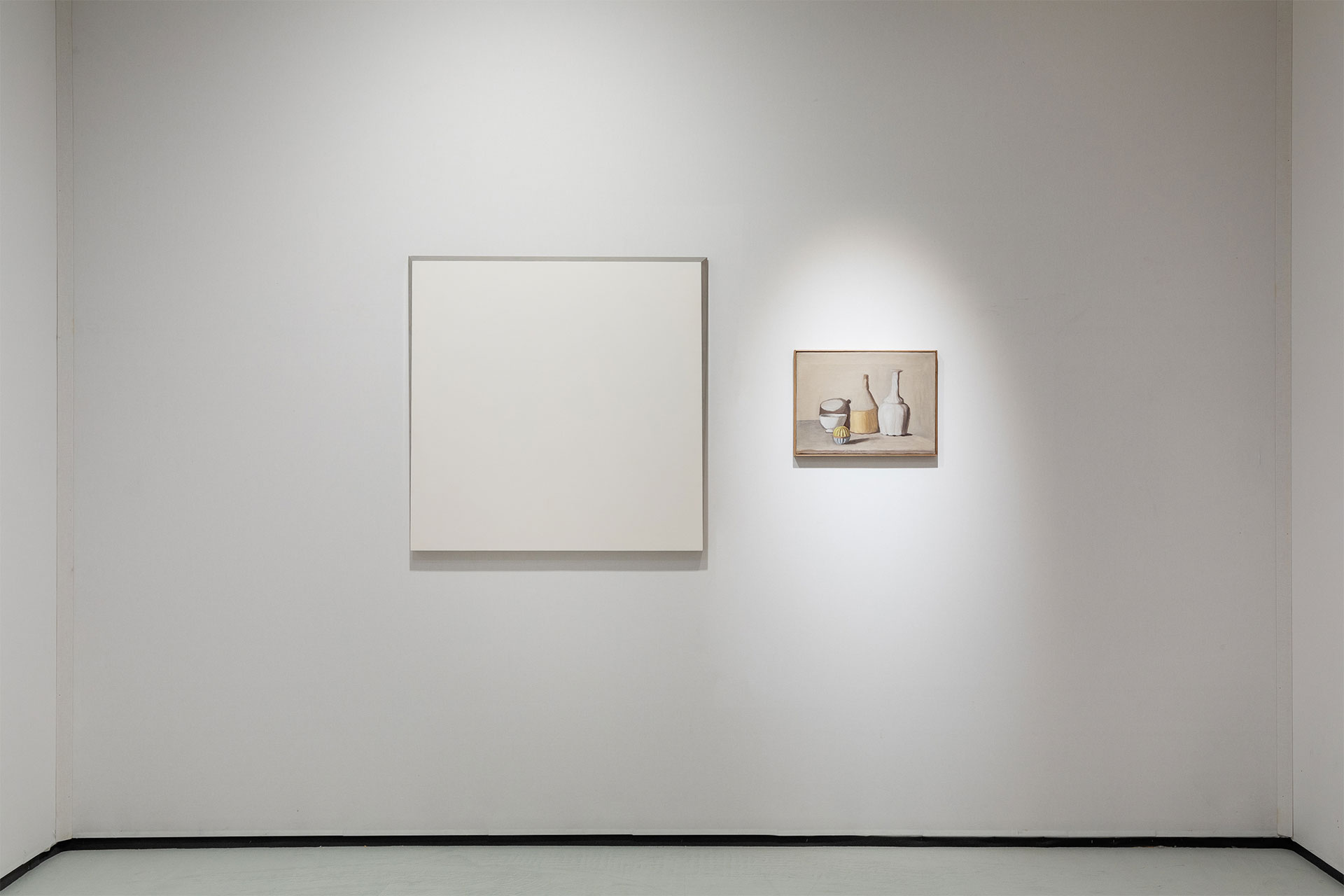Beyond the boundaries of space and time, the works by the XXth century master Giorgio Morandi (1890 – 1964) are source of study and inspiration for the most important contemporary artists. The exhibition project offered by Galleria d'Arte Maggiore g.a.m. during Tefaf New York is aimed to demonstrate how Morandi's conception of art is of actual topic and especially how he influenced one of the main Italian contemporary artists, who recently passed away: Ettore Spalletti (1940 - 2019).
Morandi, through the use of a limited range of subject and colors, achieves an abstraction which goes beyond the image on the canvas, reaching a balance of light, color and space. This discloses the vision of a new dimension, of another reality. For this reason his art doesn't refer to the past nor the present and it is thus a forerunner of the minimal and abstract tendencies as well as the figurative ones, always standing as an example of modernity. Through his works, Ettore Spalletti recreates in the space what Morandi used to do in paintings. Leaving the framework, his monochromes seek to reproduce an atmospheric dimension made of light and color in the place where they are exhibited. As the artist himself confirmed: «You enter a room and it feels like that place loses the reality of its color to gain the chromatic value which is distributed inside it». The landscapes by Morandi are themselves an abstraction where, taking a close look, just spots of color can be perceived and not real shapes of nature or buildings, with no evidence of human presence. Likewise, Spalletti wants us to walk through a similar atmosphere in which his works are included. An atmosphere that absorbs and is filled with pigments of light and color vibrating all over the room. Quoting the artist once more, Spalletti said: «Unlike ancient art, limited by a framework, contemporary art takes the responsibility of the space». In several interviews, Spalletti clearly pointed out that he often liked to create his works nearby a painting by Morandi.
In the exhibition catalogue Osmosis: Ettore Spalletti and Haim Steinbach (Guggenheim Museum, New York, 1993), Germano Celant speaks also about Morandi and Spalletti: «To find a historical analogy, we could cite the enigma of object and painting in Giorgio Morandi's work. For him, too, color, as powder or fresh snow, manages to form carafes and bottles — floury volumes and luminescent products. In many of his still lifes, the fluidity of the chromatic material confuses and fuses object and shelf, joggling their confines, so that the palpitation of the color suggests a transition between diverse entities. At the same time, the carafes and bottles flow through a vacuum that reveals their enchanted solitude; yet they are arranged in a linear and spatial sequence attesting to their equilibrium and their inherent absoluteness. In Morandi's work, we see a thoroughly balanced harmony of form and tone as well as a perceptional ambiguity between object and surface, between spiritual and material elements».
Read more +
Read less -







 Sign in with email
Sign in with email



